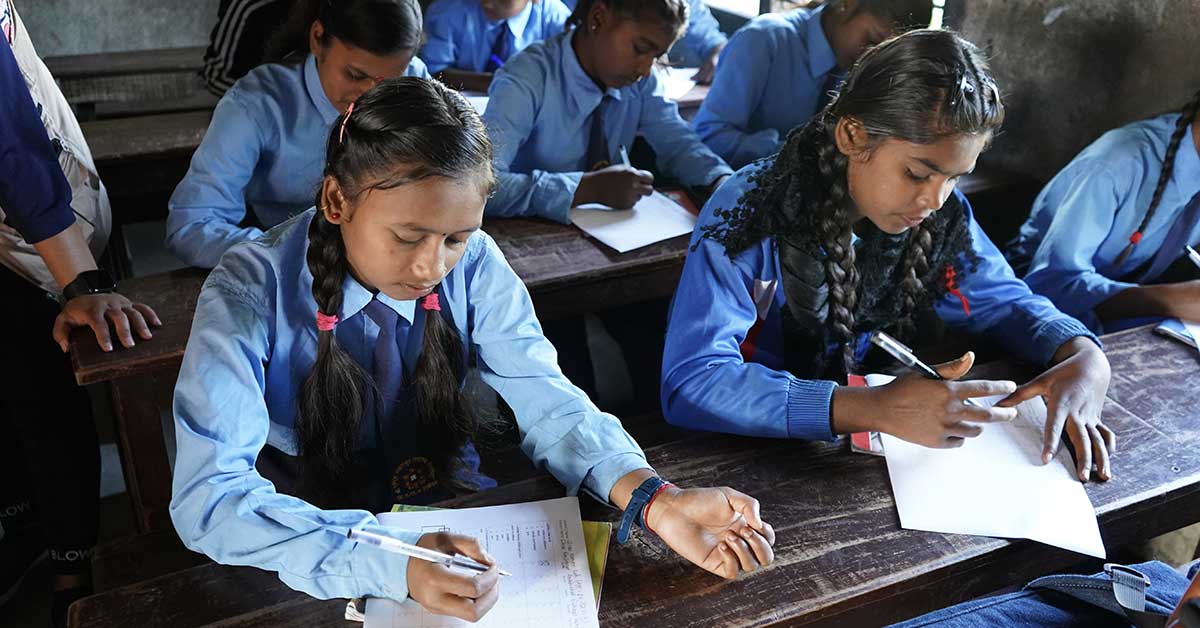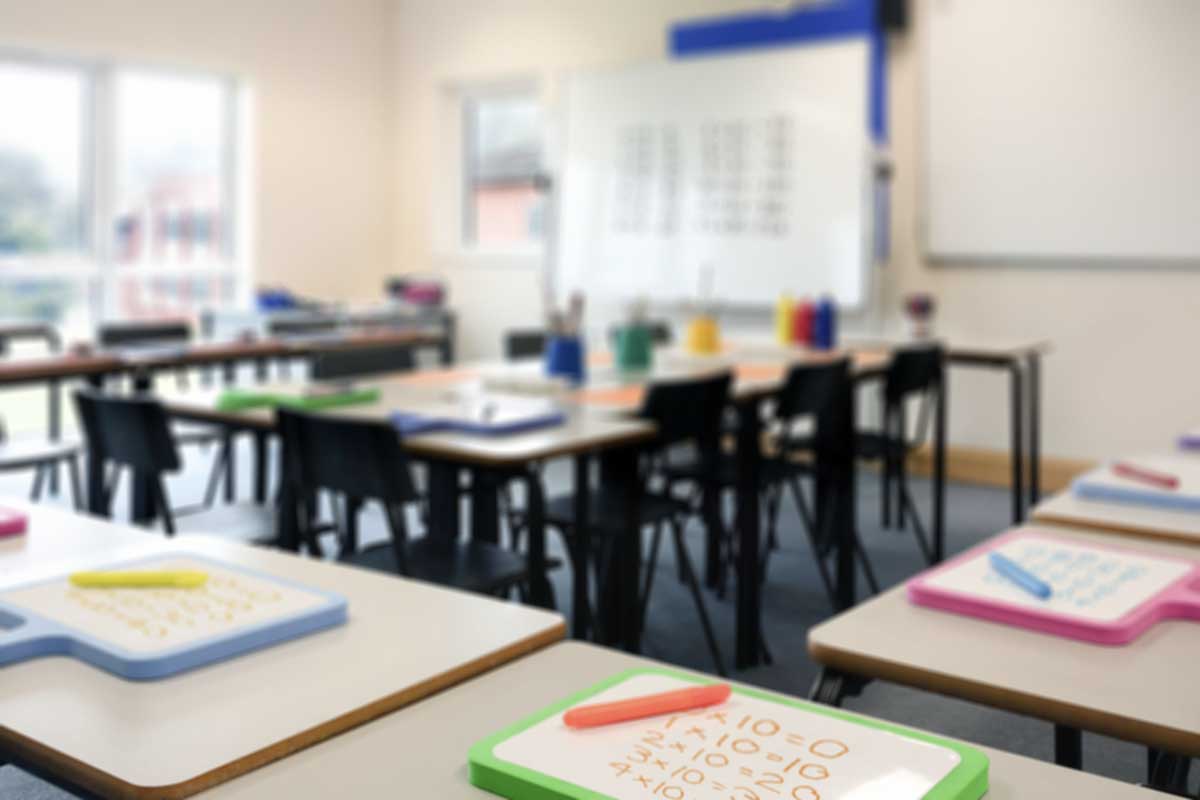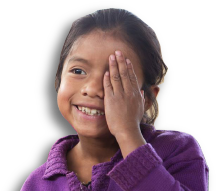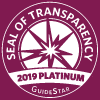
Across low-and-middle-income countries, less than half of 10-year-old children can read. This alarming phenomenon has been labelled by education experts around the world as the global ‘learning crisis’: A bitter-sweet situation in which we have achieved near universal primary education, including gender parity, but in which children are not achieving sufficient mastery of basic literacy and numeracy.
Policymakers will need to use a variety of tools to address the learning deficit. One promising but under-considered intervention is hiding in plain sight: eyeglasses.
Around the world, millions of children attend school with myopia, hyperopia and astigmatism. Without glasses, they are unable to see blackboards and books, learning much less than their peers (Figure 1). But how much less do they learn? And what are the economic implications of this lack of learning?


Source: CooperVision https://coopervision.com/myopia-simulator
To mark World Sight Day, 2024, the Seva Foundation with IAPB is releasing a groundbreaking report, Better Education in Sight: An estimate of global learning and economic productivity losses from uncorrected refractive error in schools. The report quantitatively estimates the loss of learning from uncorrected refractive error in schools and the productivity loss this means for children when they reach adulthood.
Co-authored by Parami Dhakwa from the Nepal office of the Seva Foundation, Bryce Everett of Mettalytics and me, the report provides some eye-opening findings:
- Children with refractive error learn half as much as children with good or corrected vision. We estimated this figure by conducting a systematic literature review (essentially a very precise form of literature review) of randomized-controlled trials that examined how much did children’s learning improve once they received glasses. Benchmarking this against the average learning of the typical student, we discovered that children without glasses learned around half as much as their well-sighted peers. To put this in perspective, a child in grade 6 who had spent their whole schooling years with uncorrected refractive error would only have the learning levels equivalent to a child who was halfway through grade 3.
- Across the world, 6.3 million years of equivalent years of schooling are lost annually due to uncorrected refractive error. When we apply the finding to all children enrolled in school aged between 5-17, we find that 6.3 million equivalent years of schooling ‘are left on the table’, so to speak. What this means is that if children were given glasses and wore them, it would generate the same amount of learning as if 6.3 million kids were newly enrolled in school. Unfortunately, 83% of this loss is concentrated in low-and-middle-income countries, contexts which can ill afford this loss of learning.
- Every year of inaction on refractive error, generates a $173 billion dollar loss of earnings in the future (purchasing power parity adjusted). Projecting into the future using standard links between learning and future income, we find that the economic loss is a staggering $173 billion. This is an annual figure, which means if refractive error remains uncorrected for years, the potential total loss to children and the global economy could easily run into the hundreds of billions, or even trillions of dollars.
The good news is that the intervention to address this enormous loss – comprehensive vision screening and the provision of glasses – is proven, inexpensive and scalable in low-and-middle-income countries. For example, in Nepal, the Seva Foundation works with partner hospitals and schools around the country to screen 200,000 children every year.
Moreover, the returns from vision correction are substantial. The Seva Foundation’s recent Best Buys paper shows that the returns to school screening are as large as $65 in benefits for every $1 spent – an extremely effective use of funds. Overall, there is a compelling case for improving children’s vision – not just on moral or health grounds – but also because of its profound social and economic impact. Eyeglasses can help address the global learning crisis. The time to act is now.
You can read a summary of the Better Education in Sight report and/or the full report of Better Education in Sight here.

Report Citation: Parami Dhakhwa, Bryce Everett, Brad Wong. Better education in sight. An estimate of global learning and economic productivity losses from uncorrected refractive error in schools. (2024) https://doi.org/10.17605/OSF.IO/ZTGPQ






